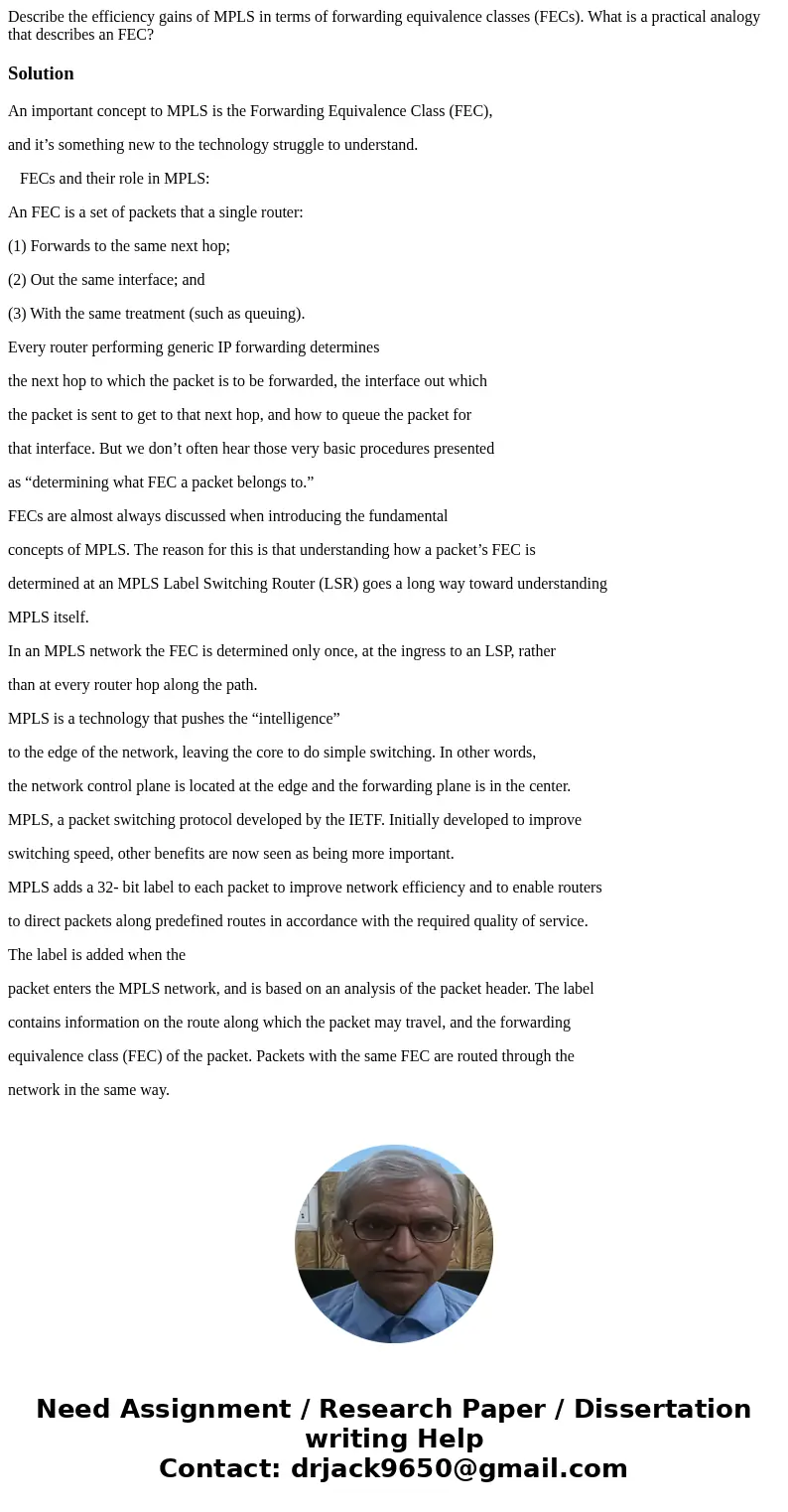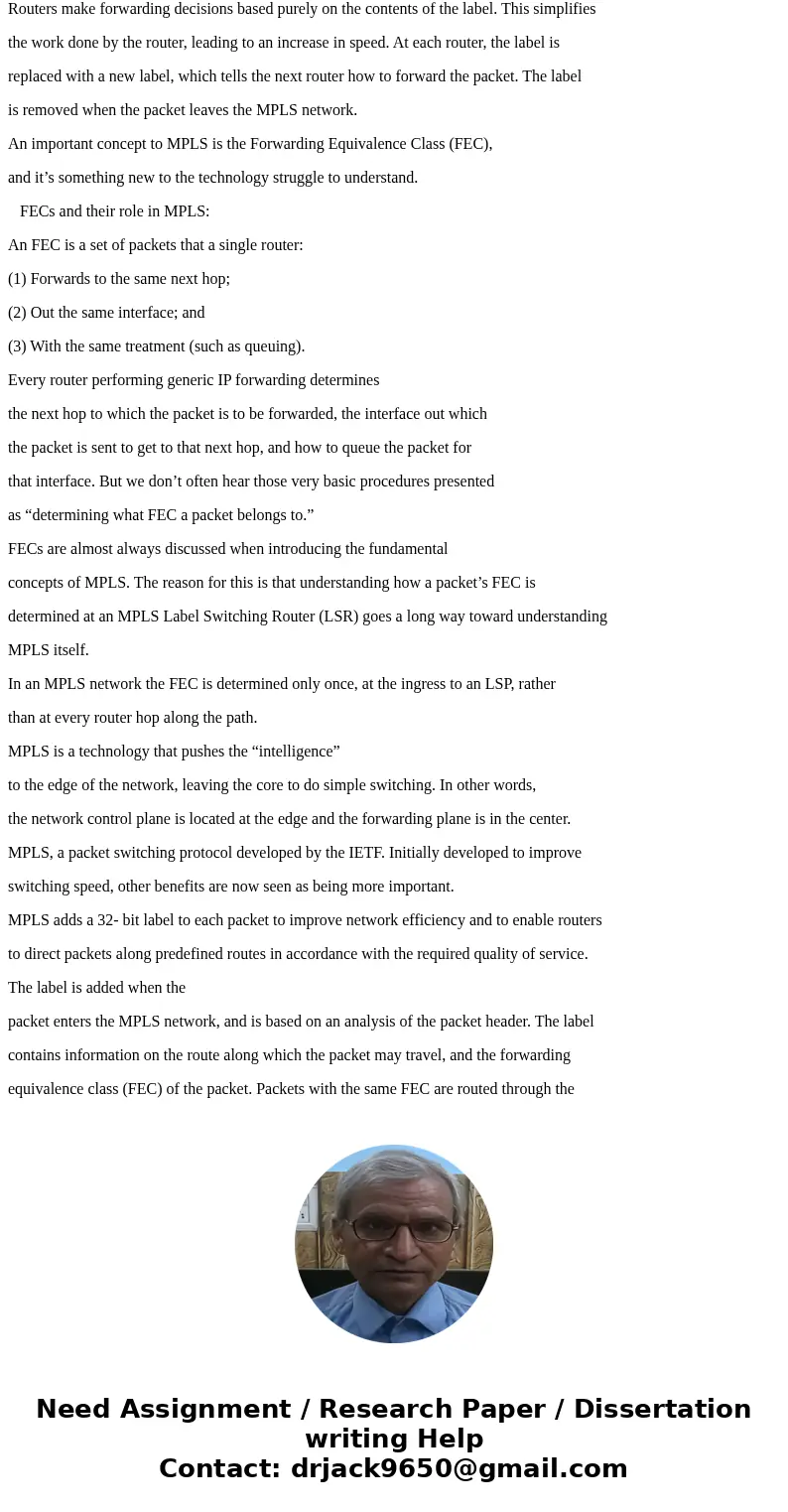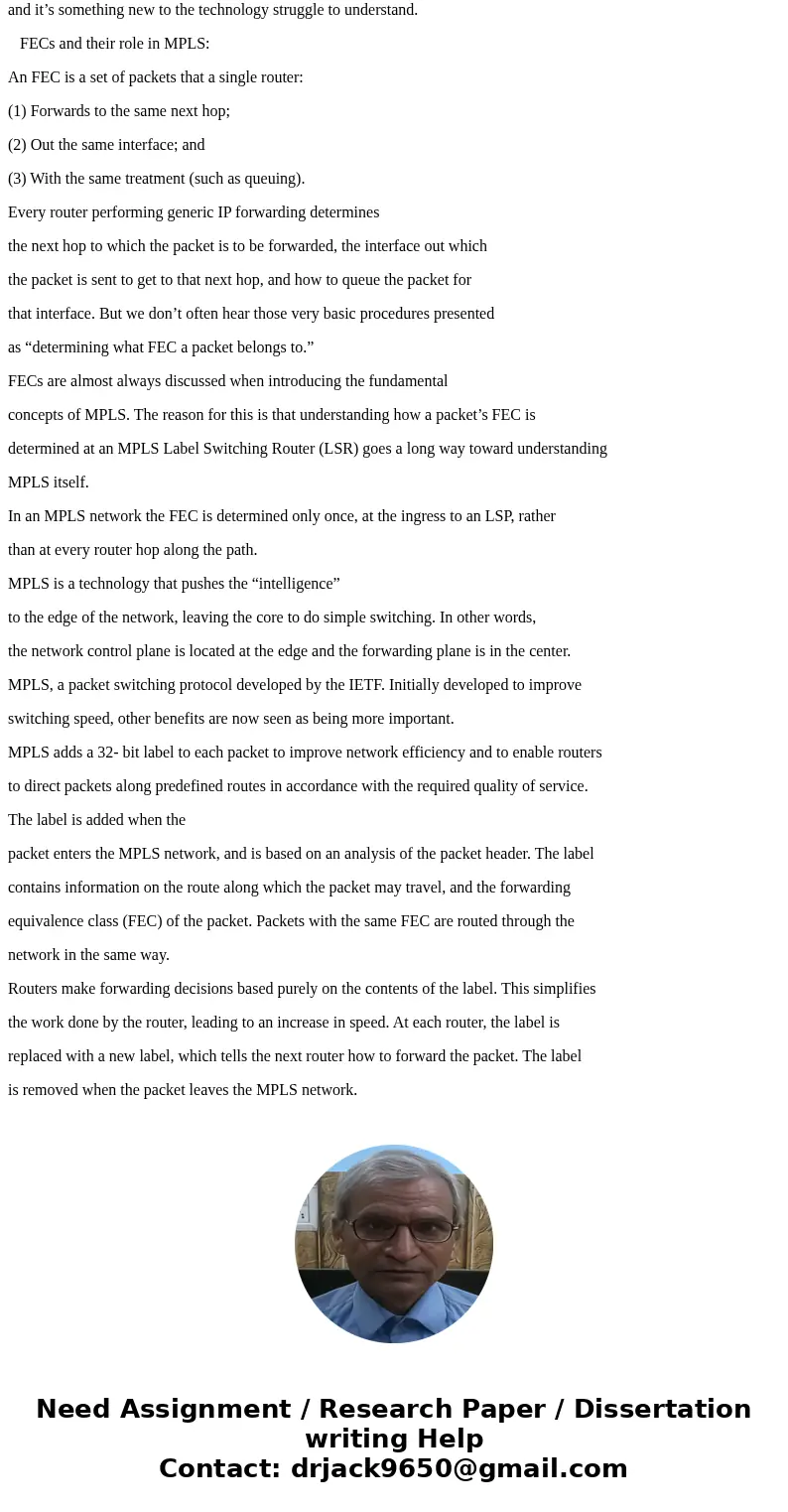Describe the efficiency gains of MPLS in terms of forwarding
Describe the efficiency gains of MPLS in terms of forwarding equivalence classes (FECs). What is a practical analogy that describes an FEC?
Solution
An important concept to MPLS is the Forwarding Equivalence Class (FEC),
and it’s something new to the technology struggle to understand.
FECs and their role in MPLS:
An FEC is a set of packets that a single router:
(1) Forwards to the same next hop;
(2) Out the same interface; and
(3) With the same treatment (such as queuing).
Every router performing generic IP forwarding determines
the next hop to which the packet is to be forwarded, the interface out which
the packet is sent to get to that next hop, and how to queue the packet for
that interface. But we don’t often hear those very basic procedures presented
as “determining what FEC a packet belongs to.”
FECs are almost always discussed when introducing the fundamental
concepts of MPLS. The reason for this is that understanding how a packet’s FEC is
determined at an MPLS Label Switching Router (LSR) goes a long way toward understanding
MPLS itself.
In an MPLS network the FEC is determined only once, at the ingress to an LSP, rather
than at every router hop along the path.
MPLS is a technology that pushes the “intelligence”
to the edge of the network, leaving the core to do simple switching. In other words,
the network control plane is located at the edge and the forwarding plane is in the center.
MPLS, a packet switching protocol developed by the IETF. Initially developed to improve
switching speed, other benefits are now seen as being more important.
MPLS adds a 32- bit label to each packet to improve network efficiency and to enable routers
to direct packets along predefined routes in accordance with the required quality of service.
The label is added when the
packet enters the MPLS network, and is based on an analysis of the packet header. The label
contains information on the route along which the packet may travel, and the forwarding
equivalence class (FEC) of the packet. Packets with the same FEC are routed through the
network in the same way.
Routers make forwarding decisions based purely on the contents of the label. This simplifies
the work done by the router, leading to an increase in speed. At each router, the label is
replaced with a new label, which tells the next router how to forward the packet. The label
is removed when the packet leaves the MPLS network.
An important concept to MPLS is the Forwarding Equivalence Class (FEC),
and it’s something new to the technology struggle to understand.
FECs and their role in MPLS:
An FEC is a set of packets that a single router:
(1) Forwards to the same next hop;
(2) Out the same interface; and
(3) With the same treatment (such as queuing).
Every router performing generic IP forwarding determines
the next hop to which the packet is to be forwarded, the interface out which
the packet is sent to get to that next hop, and how to queue the packet for
that interface. But we don’t often hear those very basic procedures presented
as “determining what FEC a packet belongs to.”
FECs are almost always discussed when introducing the fundamental
concepts of MPLS. The reason for this is that understanding how a packet’s FEC is
determined at an MPLS Label Switching Router (LSR) goes a long way toward understanding
MPLS itself.
In an MPLS network the FEC is determined only once, at the ingress to an LSP, rather
than at every router hop along the path.
MPLS is a technology that pushes the “intelligence”
to the edge of the network, leaving the core to do simple switching. In other words,
the network control plane is located at the edge and the forwarding plane is in the center.
MPLS, a packet switching protocol developed by the IETF. Initially developed to improve
switching speed, other benefits are now seen as being more important.
MPLS adds a 32- bit label to each packet to improve network efficiency and to enable routers
to direct packets along predefined routes in accordance with the required quality of service.
The label is added when the
packet enters the MPLS network, and is based on an analysis of the packet header. The label
contains information on the route along which the packet may travel, and the forwarding
equivalence class (FEC) of the packet. Packets with the same FEC are routed through the
network in the same way.
Routers make forwarding decisions based purely on the contents of the label. This simplifies
the work done by the router, leading to an increase in speed. At each router, the label is
replaced with a new label, which tells the next router how to forward the packet. The label
is removed when the packet leaves the MPLS network.



 Homework Sourse
Homework Sourse